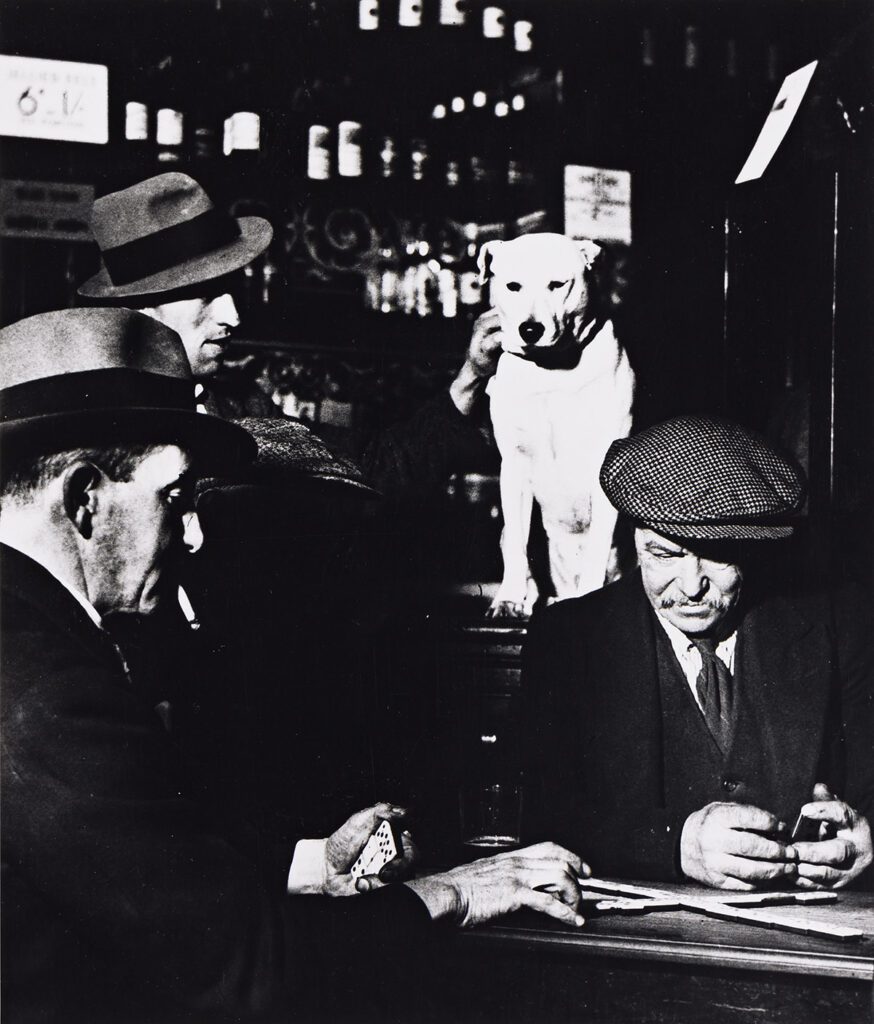Bill Brandt
Bill Brandt (1904–1983) is arguably the most admired British photographer of the twentieth century, yet remains one of its most enigmatic figures. Born in Hamburg to an English father and German mother, he cultivated a cosmopolitan imagination shaped by his early years in Germany, a prolonged tuberculosis convalescence in Switzerland in the mid‑1920s, portrait‑studio training in Vienna in 1928, and three months with Man Ray in Paris amid the heyday of Surrealism in 1929.
Settling in England in 1931, Brandt’s varied apprenticeship bore fruit with his first book, The English at Home (1936), which juxtaposed “upstairs/downstairs” country‑house and London‑mansion life in striking, flash‑lit images. His next volume, A Night in London (1938), again explored all levels of society, this time using the newly invented flash bulb to dramatic effect. In 1937 he produced iconic work in England’s industrial north; during the Blitz of 1940 he documented Underground stations turned ad hoc bomb shelters for the Ministry of Information; and throughout World War II he contributed vivid reportage to leading magazines, later collected in Camera in London (1948), which also contains his most substantial writings on photography.
After the war Brandt turned to portraiture and landscape in Literary Britain (1951), pairing the English countryside with quotations from its writers. In 1945 he acquired a Kodak police‑issue wide‑angle camera—“to see like a mouse, a fish, or a fly”—and with it, and later a Hasselblad Superwide, revolutionized the nude form in Perspectives of Nudes (1961). He reflected on his life’s work in Shadow of Light (1966) and capped his career with a landmark retrospective at MoMA, New York (1969), which toured to the Hayward Gallery and other British institutions, helping to redefine photography’s place in the fine arts.
Photography & Works
-

Bill Brandt
“Avebury” England Add to cart -

Bill Brandt
A Snicket in Halifax Add to cart -

Bill Brandt
After the Theater Add to cart -

Bill Brandt
Avebury: After Thomas Hardy (Stone Circle, Wiltshire) Add to cart -

Bill Brandt
Billingsgate Porter Add to cart -

Bill Brandt
Camden Hill Add to cart -

Bill Brandt
Coal Searchers Add to cart -

Bill Brandt
Coal-Searcher Going Home to Jarrow Add to cart -

Bill Brandt
Domino Players in a North London Pub Add to cart -

Bill Brandt
Halifax Add to cart -

Bill Brandt
Losing at the Horse Races, Auteuil, Paris Add to cart -

Bill Brandt
Moira Shearer Add to cart -

Bill Brandt
Nude Add to cart -

Bill Brandt
Nude Add to cart -

Bill Brandt
Nude, Campden Hill, London Add to cart -

Bill Brandt
Nude, London Add to cart -

Bill Brandt
Nude, Micheldever, Hampshire, November Add to cart -

Bill Brandt
Parlourmaid and Underparlourmaid Ready to Serve Dinner Add to cart -

Bill Brandt
Portrait of a Young Girl, Eaton Place, London Add to cart -

Bill Brandt
Stonehenge Add to cart -

Bill Brandt
Top Withens, Yorkshire Add to cart -

Bill Brandt
Train Leaving Newcastle Add to cart -

Bill Brandt
Untitled Add to cart
News & Articles

Simple Pleasures: Every Body Tells A Story

Iconic Photographs: Pictures that Stand the Test of Time

Rhythms of the City

Planes of Light: Photographs and Spatial Borders

Bill Brandt’s René Magritte

Bill Brandt’s Parlourmaid and Under-Parlourmaid Ready to Serve Dinner

Environmental Diversity: The World Through a Lens

